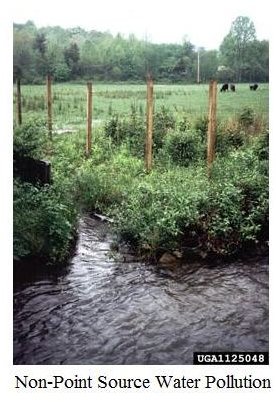Causes and Types of Water Pollution
Introduction to Water Pollution
Water pollution has been around since mankind began living along rivers, lakes, and streams and discarding wastes into those bodies of water. As populations increased and industrialization took place, more water pollution with a wider range of pollutants took place. Early concerns about effects of water pollution centered on bacterial contamination and waterborne disease transmission. Factors like growth of industrialization and increased agricultural use of fertilizers and pesticides led to concern about water pollution from chemicals and nutrients.
Causes of Water Pollution
The causes of water pollution are sometimes classified as point sources and non-point sources.
Point sources, as the name implies, include any discharges from a fixed point, like discharges from wastewater treatment plants, treated or untreated industrial or commercial discharges, or oil spills into a water body. Non-point pollution of water comes from diffuse sources, and typically enters the water body as storm water runoff. The storm water runoff picks up nutrients, sediment, chemicals, and many other types of pollutants that are carried to the water body that the storm water is discharging into.
Image Credit: forestryimages.org
Types of Water Pollution
There are many possible types of water pollution. Some of them are summarized in the list below:
- bacterial contamination that can spread diseases
- biodegradable organic matter that exerts an oxygen demand in the water body, thus decreasing the dissolved oxygen level, possibly enough to affect aquatic life
- suspended solids which cause siltation of the water body and may settle out in the water body
- nutrients (nitrogen and phosphorus containing compounds) that have adverse effects on lakes and ponds
- chemicals that can have a wide variety of effects on aquatic life or on humans ingesting the water
Control of Water Pollution
Developed nations control the quality of water by legislation and strict supervision to ensure that the water pollution control is carried out in accordance with the authorized standards. Domestic sewage is handled by treatment plants that may remove 85% or more of the pollutants, and also treat pathogens and nutrients. Households not served by a treatment plant may arrange a separate septic tank that treats the wastewater and releases effluent into the soil.
Wastewater generated by industries may contain conventional pollutants like oil, organic compounds, and other pollutants like ammonia that require special treatment techniques. Some industries may install pre-treatment processes that remove the toxic pollutants, and send the partly treated wastewater to the main treatment system of the municipality. Non-point source agricultural water pollution is controlled by reduction of excess flows and retention of soil on the fields. Avoiding excess application of nutrients helps to avoid the entry of nutrients into receiving water bodies by runoff from crop residuals. The impact of pesticides can be minimized by the utilization of integrated pest management systems.
References
1. NOAA’s National Centers for Coastal Ocean Science, Water Pollution Overview
2. U.S. EPA, Protecting Water Quality from Agricultural Runoff
3. U.S. EPA, <em>Contaminated Sediments in Water</em>
